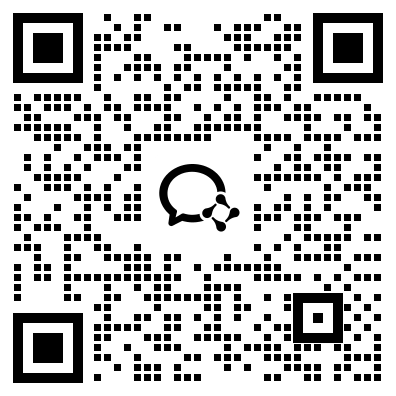- 翰林提供学术活动、国际课程、科研项目一站式留学背景提升服务!
- 400 888 0080
【AP心理学】7.Cognition:碎片时间知识点回顾
KEY TERMS
Memory
Three-box/information-processing model
Levels of processing model
Sensory memory
Iconic memory
Selective attention
Echoic memory
Short-term memory (working memory)
Chunking
Mnemonic devices
Rehearsal
Long-term memory
Episodic memory
Semantic memory
Procedural memory
Explicit memories (also called declarative memories)
Implicit memories (also called nondeclarative memories)
Eidetic, or photographic, memory
Retrieval
Recognition
Recall
Primacy effect
Recency effect
Serial position effect (also called serial position curve)
Tip-of-the-tongue phenomenon
Semantic network theory
Flashbulb memories
State-dependent memory
Mood congruent memory
Constructed (or reconstructed) memory
Relearning effect
Retroactive interference
Proactive interference
Anterograde amnesia
Retrograde amnesia
Long-term potentiation
Phonemes
Morphemes
Syntax
Language acquisition
Overgeneralization or overregularization
Language acquisition device
Linguistic relativity hypothesis
Prototypes
Images
Algorithm
Heuristic
Representativeness heuristic
Belief bias or belief perseverance
Functional fixedness
Confirmation bias
Convergent thinking
Divergent thinking
Availability heuristic
KEY PEOPLE
George Sperling
Hermann Ebbinghaus
Noam Chomsky
Elizabeth Loftus
Benjamin Whorf
Wolfgang Köhler
图片
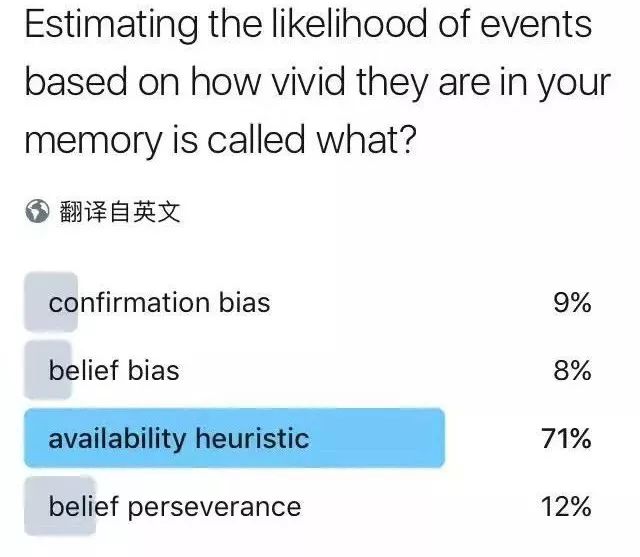
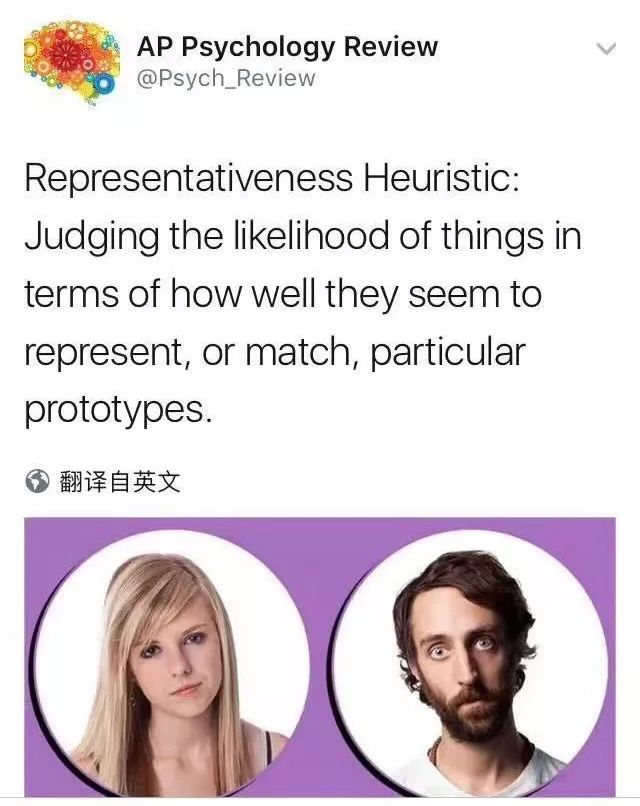

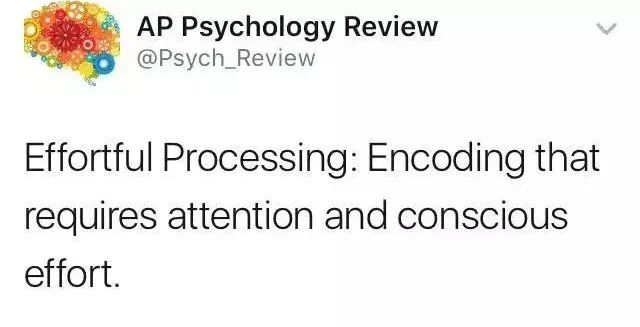
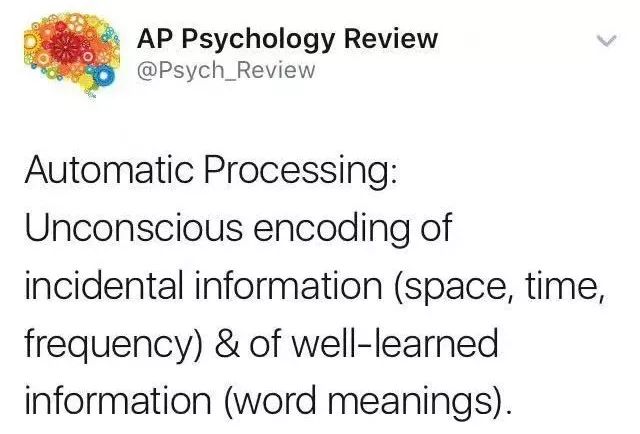
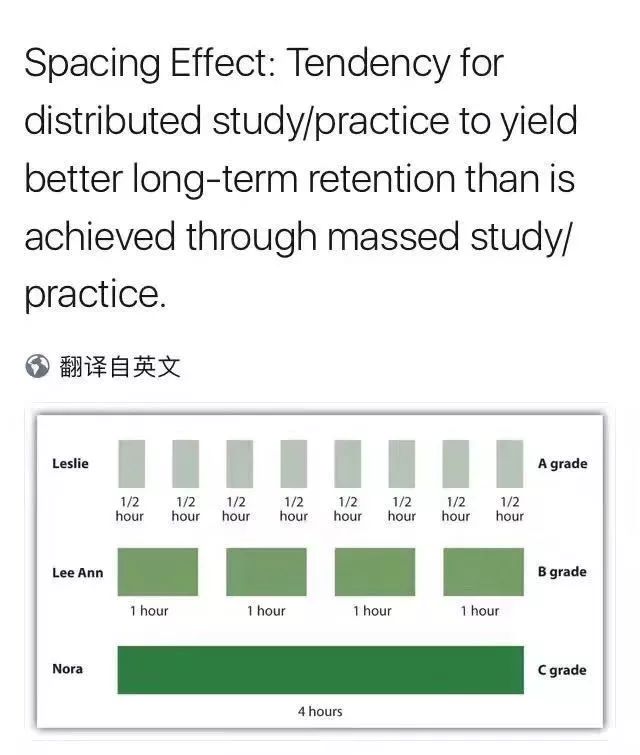
国外网页上的outline
Introduction
A brief sensory memory is stored. This is like an after-image if you have your eyes closed then flashing them open-and-closed again.
The info goes into short-term memory where it’s encoded via rehearsal.
Finally, the info goes into long-term memory.
This theory is a bit limited. A modified version of this 3-step theory would also include:
The idea that some memories go straight to long-term memory.
There is a working memory, a version of stage 2. The working memory is where we focus on information that is useful or needed right then.
Encoding - How we get information into our brain. Like a keyboard on a computer.
Storage - How we hold onto that information. Like a hard drive.
Retrieval – How we get the info back out of our brain. Like a computer’s file system.
In one experiment, people were shown 2,500 slides for 10 seconds. Later, 280 slides were repeated along with never-before-seen slides. People could pick out the seen-slides 90% of the time.
In another experiment, people were shown pictures. Then 17 years later, shown partial images of those pictures. Those who had seen the pictures were better at recognizing the partial images than those who’d never seen them.
We are our memories. Without memory, we’d be little more than a rock.
Memory is learning that has remained over time, information that’s stored and can be retrieved.
Even regular people have amazing memories.
One idea of memory is called the information processing model and takes after a computer. There are three parts to this model…
Another model is called connectionism. It has the idea that memories are made up of interconnected neural networks. The theory is that memories are made in three stages…
Encoding: getting information in
What we encode is sometimes a mystery. We immediately ignore some things, work to remember some things, and remember others without much or any effort at all.
The idea here is that while trying to remember the first things, your learning of them interferes with your learning of the ones that follow. This is called the “primacy effect.”
Then, you’re likely to remember the last one or two because they’re in your working memory. This is called the “recency effect.”
“Mass practice” (AKA “cramming”) gives quick, short-term learning and may make a person feel more confident.
However, “distributed study time” yields better long-term learning.
Also, in the “testing effect,” repeated quizzing helps to learn material (as well as evaluate what someone has learned).
He made up jibberish syllables like: BAZ, KEL, NOX, or WUQ. Then he read them aloud until he remembered them. The next day he recorded how many he could remember (not many). But…
The more times he’d rehearsed or repeated the syllables, the quicker he could relearn them the next day.
Once learned, additional rehearsal called overlearning increased retention.
The principle emerged: the amount remembered depends on amount of time spent learning.
Rehearsal is simply repetition. Hermann Ebbinghaus studied this type of memory.
The spacing effect influences memory. This says that we remember better if we space our study or reheasal out over time.
The serial position effect suggests that, when trying to remember a list of something, you’re more likely to remember the first and last ones.
Hierarchies help us to organize and thus to remember info. The human brain likes order – hierarchies help us get that.
Chunking is often used as a mnemonic device. For instance Roy G. Biv stands for red, orange, yellow, green, blue, indigo, violet.
The “good times” of our memories may be due to what’s called “rosy retrospection.” This is where the boring memories fade away and the nice images remain. For instance, on a trip to New York City, we forget the long wait in the airport but remember the scene atop the Empire State Building.
Mnemonic devices are tricks that help memory and are often visually based.
For example, the peg-word system assigns a visual image to a number, like one-bun, two-shoe, three-tree, etc. By pairing another word to the peg-word, a list can be recalled in order.
Visual encoding – refers to images and shapes.
Acoustic encoding – refers to sounds.
Semantic encoding – refers to meanings of words.
A study tried to measure which of these was most effective to memory. Words were flashed then people were asked visual, acoustic, and questions of meaning.
The results revealed that semantic encoding was most effective, then acoustic, and lastly visual encoding.
These studies show how effective it is to rephrase things in our own words when trying to memorize them.
They also show that when learning new material it’s (a) important to rehearse or repeat it and (b) it’s important to make it meaningful to you in some way.
What we encode is affected by its context. This means that what we already know impacts what we take in and how we remember it. This can sometimes mess us up.
There are three types of encoding techniques for verbal information…
Visual encoding involves imagery. We can much more easily remember concrete things or words, like “dog”, “truck”, or “flower” than abstract words like “honor”, “wrath”, or “clever.”
Chunking is memorizing things in small groups, rather than alone or in one large group. This is why we write and think of phone numbers as 555-867-5309. We remember 555, then 867, and 5309.
Hierarchies are organized structures. You usually see these as flow-charts that analyze an organization (like a government) or a process.
Whereas computers do things in sequence (called “serial processing”), the human brain can do many things at once, called parallel processing.
Automatic processing can simultaneously handle: space (where you are), time, frequency (how often something happens), well-learned information (some things we’ve learned so well, like words on a sign, we process them without even knowing it).
Reading is a good example of automatic processing. While first learning to read, you start with a word or two. Then maybe 50 on a page, then more. Eventually, your eyes cover pages almost as fast as they can scan the words.
There are two main types of encoding: automatic (where you don’t think about it) and effortful (where you must purposely try to remember).
Automatic processing takes place automatically, without any conscious effort on your part. You know the way from a classroom to the cafeteria and you walk there without even thinking about it.
Effortful processing takes place when we put in a purposeful effort to remember something. There are three components to effortful processing. They are:
Storage: retaining information
Explicit memory – Consciously recalled memories. AKA declarative memory.
Implicit memory – Memory without conscious recall. AKA nondeclarative memory or procedural memory.
Two parts of the brain play a special role in memory…
The dual implicit/explicit memory systems apply to infants as well. Things infants learn may well stretch into the future, but we have no explicit memories of learning them.
These are things like facts or experiences that you can call up.
This can be either skills (like riding a bike) or classical conditioning. The person may know how to skateboard, but wouldn't be able to explain (or declare) that they know it.
Damage to the hippocampus hurts memories. Extra activity in it during sleep seems to help people remember things later on.
The hippocampus is more of a temporary site for memories.
The hippocampus (in the temporal lobe) seems important in writing new memories.
The cerebellum is important for storing implicit memories from classical conditioning.
The famous patient known as “H. M.” had part of his brain removed. He retained old memories, but could not retain new ones.
Emotional news, like hearing of a loved-one’s death, or stressful situations, like an oncoming tornado “burn” themselves into our memories. These memories are very accurate.
These memories are “written” into our memories due to action by the amygdala and to hormones released at the time.
Flashbulb memories occur at times of crisis, such as the events of 9/11, 2001. Our brain’s take a “snapshot” when something like that happens. These memories also prove to be very accurate.
There are extreme examples of this, like people remembering and reciting pi to ridiculous levels.
The biological storage process is complex.
The sea slugs' synapses changed. Eventually it needed less of a stimulus to make the neuron “fire.” This is called long-term potentiation or (LTP). In other words, the threshold needed to achieve action potential is lowered due to LTP.
Memories appear to be stored throughout the brain (not in one place).
Researchers have studied the synapses of sea slugs called Aplysia. It’s nerve cells are very large and accessible.
The protein “CREB” is an off/on switch for genes. A drug or supplement of CREB may one day help the synapses that help memory.
Increasing glutamate, a neurotransmitter, may also increase LTP and memory.
An electric current or a jolt to the head won’t affect long-term memories, but can wipe out short-term memories. A boxer who gets knocked out often doesn’t remember the hit that brought him down.
Short-term memory lasts only a few seconds. In one study, after a 3 second delay, people forgot 3-consonant groups half the time. They forgot them almost completely after 12 seconds.
Short-term memory can hold only about 7 bits of information.
George Sperling flashed a 3 by 3 grid of letters to people and asked how many letters they remembered (about half). But, if prompted just after the flash to remember a certain row, they remembered them almost perfectly.
This illustrated iconic memory which says that for a brief moment the image remains "burnt" in our eye. In Sperling’s experiment, all 9 letters were “visible” for a short time. That’s why a row could be named.
For sound, we also have a very similar echoic memory where sound is very briefly stored.
Sensory memory is like a lightning flash of what you see (or hear, etc.). How much of this do we remember?
Working or short-term memory is the temporary holding place for information that we’re using at the current time. For instance, if someone tells us a phone number, we can stick it in our head long enough to dial, then we forget it.
Long-term memory appears to be limitless.
Strong emotion or severe stress can heavily influence memories.
Amnesia is the inability to form new memories.
There appears to be two types of memory systems…
Retrieval: getting information out
Our memories are said to be mood-congruent. This means that that when in a certain mood, it’s easier to recall memories that fit that mood. For instance, when in a depressed mood, for whatever reason, it’s easier to recall other depressing memories.
The phenomena of déjà vu can be triggered by reentering a similar situation. Rather than actually having been in a situation before, certain similar memories may be similar enough to make us believe we’ve been there before.
Mnemonic devices serve as retrieval cues. Examples are ROY G. BIV and peg-words.
Sometimes priming cues us to remember things. Priming gives us hints to unlock our memories, and could be nothing more than a key word to open the door to our memories.
Recall is the ability to call up stored memories. It’s like a fill-in-the-blank test.
Recognition is identifying something already learned. It’s like pinpointing a correct definition on a multiple choice test.
Relearning is a measurement of time saved when learning something a second time. Learning something a second time comes faster and easier.
Key terms in retrieval…
Retrieval cues help us to pull information out of our memories.
Context effects refer to the fact that we remember things in the context or setting in which they’re normal. It’s like knowing a person by name, then seeing them somewhere unexpected and not being able to recognize them.
Moods and memories also cue us to remember certain things. If we re-live a certain mood or memory, we’re more likely to remember a certain memory that was stamped into our brains at that time.
Forgetting
Forgetting:
Distortion:
Intrusion:
Absent-mindedness – our minds are elsewhere.
Transience – time decays memories.
Blocking – we have it on the tip of our tongue, but can’t get it.
Misattribution – our memories “cross wires” as to who said it or if it was a dream.
Suggestibility – our memories become susceptible to suggestion by others.
Bias – our current feelings/beliefs can influence memories.
Persistence – certain memories, usually bad, won’t go away.
Memory can be stunningly accurate, like people who remember every detail of every day of their lives, or stupidly bad, like forgetting a person’s name who was introduced to you 2 seconds earlier.
Daniel Schacter has identified “7 sins of memory”…
Encoding failure
Most of what we sense, we don’t notice. And, much of what we notice we don’t encode (thus don’t remember it).
As we get older, our ability to encode declines.
An example of sensing much but encoding less is seen in the penny. Most people incorrectly identify a real penny if its components are switched around.
Storage decay
At first, we forget very much very fast.
Then, forgetting diminishes, then finally levels off.
Once encoded, the question then is, “How quickly do we forget?”
Hermann Ebbinghaus graphed his forgetting of nonsense syllables. His results showed the forgetting curve.
Retrieval failure
As to why we do this, Sigmund Freud would’ve said we do this as a defense-mechanism. He felt we “repress” painful memories to protect our self-concepts and reduce anxiety.
In Freud’s world, these memories are repressed, but not forgotten. They’ll one day surface if cued the right way.
An example was a woman afraid of running water. She didn’t understand her fear until her aunt said, “I have never told.” As a girl the woman had run off, gotten trapped under a waterfall, and was saved by the aunt who promised to never tell.
Freud’s ideas are rich throughout psychology. But, modern psychologists tend to think that he was wrong. Sadly, painful memories usually last.
Proactive interference (AKA “forward acting interference”) takes place when something you’ve previously learned gets in the way of learning something new.
Retroactive inference (AKA “backward-acting interference”) takes place when new info makes it hard to remember old info.
Notably, sometimes knowing something similar can help. Knowing a similar language can sometimes help you learn another. This is called positive transfer.
For example, learning letters in Italian may be tricky if you’d first learned letters in Spanish (they’re similar).
They had people study nonsense syllables then tried to recall them 8 hours later. One group stayed awake, the other group slept.
The two groups’ forgetting curves showed that the sleeping group remembered things much better.
The idea was that the awake group experienced more sensations which interfered with the retrieval. The sleeping group did not have that interference.
For example, a computer programmer might learn a new programming language. Then, he may have trouble reverting back to the old language that he once knew well.
Two researchers, John Jenkins and Karl Dallenbach, studied this in 1924.
Sometimes, info is “on the tip of our tongues.” It hasn’t been forgotten, it’s in memory, but we can’t get it out. There’s a retrieval failure.
Interference can hurt retrieval. Its when something similar gets in the way of trying to remember something. For instance, it’s hard to remember a phone number if other phone numbers are told to you at that time.
Our memories are pretty fluid. That is to say, we tend to unknowingly revise them.
Misinformation and imagination effects
The misinformation effect tricks us. This occurs when we’re given a bit of wrong information, we often incorrectly remember things. Often, it’s hard to tell what really happened and what we created.
“Imagination inflation” occurs when we repeatedly imagine something that happened, then remember it as though it actually did.
Oftentimes, we weave memories from things we remember—we tend to fill-in-the-blanks. This fact means that our memories are often inaccurate.
Studies of eyewitnesses consistently reveal that eyewitness memory is a rather fluid thing. Memories can be very different depending on cues such as how the questions about the incident are asked.
Source amnesia
Sometimes it’s hard to tell if a memory was real or if it was a dream.
Source amnesia (AKA “source misattribution”) occurs when we either can’t or wrongly label the source of a memory. The memory is there, but we’re not sure where it came from.
Discerning true and false memories
This field (eyewitness memory and the fabrication/unreliability or memories) is pioneered by Elizabeth Loftus.
Police officers take this to heart when interviewing witnesses. They let the eyewitness tell everything without much interruption. Then they ask “cognitive interview techniques” to cue memories.
In a study, researchers showed a face that was either happy or angry. The subjects were asked to interpret one of the emotions (“Why is she happy?” or, “Why is she angry?”).
Later, a slider morphed the picture from happy to angry. Those who explained the angry face stopped the slider at a much “angrier” level than those that saw the happy face.
Memories, both real and invented, seem real. So, by going by gut only it’s hard to tell which is real and which is made-up.
Memories are influenced by the way we interpret them.
Eyewitness testimony is frequently wrong. 79% of convicts who were proven innocent by DNA testing had been jailed largely due to eyewitness testimony.
As we grow older, we tend to think our opinions when young were much like they currently are (they usually change).
Children’s eyewitness recall
In a study to gauge memories for child-abuse cases, children were shown anatomically-correct dolls and asked, “Where did the doctor touch you?” Although none were touched there, 55% pointed to the genitals or anal area.
Most preschool children would report false events when using suggestive interviewing techniques.
Children’s memories seem even more far-fetched.
Children’s memories can be reliable when asked neutrally and without interaction with adults involved in the memory.
Repressed or constructed memories of abuse?
Sexual abuse happens. It’s too common.
Injustice happens. Sometimes, the guilty walk free and the innocent are charged.
Forgetting happens. The person may simply have been too young to remember.
Recovered memories are common. When cued, it’s common to dig up old memories. But, memories that surface on their own are more reliable than cued ones.
Memories of events before age 3 are unreliable.
Memories recovered while under hypnosis or drugs are very unreliable.
Memories, real or false, can be emotionally upsetting.
On one hand, the therapists may be trying to correctly get to the bottom of a bad deed.
On the other hand, this can lead to innocent people being wrongly accused.
Therapists go into murky waters when trying to dig up supposed lost child-abuse memories. Using techniques like hypnosis, drugs, and “guided imagery”, they often create the memories they’re trying to discover.
Several psychological groups use the following guidelines on this topic:
Improving memory
Study repeatedly. It’s best to space out study time. Speeding over material is of little or no value. Like the tortoise who beats the hare, “Slow and steady wins the race.”
Make the material meaningful. It’s very effective if you can tie whatever you’re studying to you personally. Take notes in your own words.
Activate retrieval cues. Try to recreate the mood and situation you were in when you studied it.
Use mnemonic devices.
Sleep more.
Test yourself. This rehearsal helps you learn and it shows what you need to study more.
There are psychologically-proven strategies to improve your memory. They are…
Introduction
Humans can somehow be amazingly brilliant, yet amazingly stupid. We’re both rational and irrational.
Thinking is also known as cognition. Cognitive psychologists study thinking or mental processes.
Concepts
A face-recognition study found that people tend to place a person’s ethnicity into their “ethnic prototypes.”
Concepts are simplified mental groupings of similar objects, events, ideas, and people. A concept deal’s less with the specific than with the underlying parts of whatever you’re talking about.
On purpose or not, we organize concepts into hierarchies. We like order.
We create prototypes which are ideal examples that sum up the concept. A “bicycle prototype” brings up a picture of a typical bike. If a new bike is introduced that’s radically different in design, it throws us for a while because it doesn’t fit.
Solving problems
Creativity and intelligence are not necessarily the same. People who score high on intelligence (IQ) tests are not always creative, and vice versa.
Five parts to creativity have been identified, they are:
Creativity has its obstacles.
IQ tests measure a single correct answer, this is convergent thinking.
Creativity tests measure multiple answers, this is divergent thinking.
Expertise – To be creative, people must first know something, or lots of things, from which to build. # Imaginative thinking skills – Creative folks think of things in new ways.
A venturesome personality – Creative folks don’t follow the crowd.
Intrinsic motivation – Creative folks move forward for its own sake, not money, or fame, etc.
A creative environment.
The concept mental set influences how we think. Mental set is our tendency to try to solve a problem in a manner that has worked in the past. This can be helpful to solve similar problems, but it can be hurtful when we think a problem is similar, but really isn’t.
The idea of functional fixedness can stop us. It’s where we think of things as only having their normal function. For example, we may feel we need a butter knife to cut the butter, but a fork would do just the same.
Confirmation bias is the tendency to seek out evidence that confirms our findings more eagerly than seeking evidence that refutes (or argues against) our findings. Thus, we’re more likely to think we’re right because the evidence we’ve found tends to support us.
Fixation is being unable to see a problem from a fresh perspective. While thinking on a problem, we can get stuck in our thinking. It often helps to take a time-out, clear our heads, then come back to it in a different state-of-mind.
The most basic technique is simply trial-and-error. It might work but it is very random and usually takes lots of time.
An algorithm is where you go through step-by-step procedures and are guaranteed to find the correct answer. This will work, but also often takes lots of time. For example, suppose you were given the scrambled letters YOBS and asked to unscramble them into a word. You could start with the Y and write down each letter afterwards. Then move to the O, B, etc. You’d get the answer eventually.
The method called heuristics is essentially where you “use your brain.” It depends on the problem as to how it works, but heuristics usually gets you to the answer quicker. In the example above, you might guess that few words start with Y. Therefore you'll start with another letter, say the B. A vowel would likely follow, giving you BO. With a Y and S left, the answer is pretty obvious.
In insight learning, the answer comes all-at-once. It happens when you’re stuck, but then for whatever reason, the entire answer just comes to you.
The main problem with heuristics is that sometimes you can be fooled. What's worked before may trick you at times.
When this “light bulb moment” occurs, fMRI or EEG brain scans show a spot in the right temporal bulb light up.
There are different methods to problem-solving…
Creativity is the ability to create ideas that are novel and valuable.
Making decisions and forming judgments
Surveys easily illustrate framing. If a medical treatment has a 10% chance of killing a person, it’s perceived as being a poor remedy. If it has a 90% success rate, it’s perceived as being effective. (It’s the same thing, only the perception differs due to the framing.)
To “make it personal,” use numbers like “1 person out of 100.” To downplay something, use less-personal percentages, like “1%.”
This is the same as “wording.” The phrase “aid to the needy” gets a better response than “welfare” and certainly a better response than “giving a handout.”
Intuition can often get us into trouble – decisions made without thinking usually do.
Intuition can also be right. Sometimes, there actually is a reason that we feel a certain way. Over time, we do learn things and they do lean us toward certain decisions and away from others.
It seems that when facing a decision, taking a time-out and taking your time is the best approach.
True intuition is a fast, automatic, habitual decision. You just know it, you’re not sure how or why you know it, you just know it.
To combat this phenomenon, a person should imagine that the evidence was the opposite. This tends to soften a person’s old thinking.
Overconfidence occurs when we over-estimate our knowledge and abilities. It’s aided by intuitive heuristics (gut feelings), our tendency to accept evidence that confirms our beliefs and reject evidence that disputes them, and our tendency to explain away our shortcomings.
Despite stumbling, people who are overconfident often do better than others.
Overconfidence happens to politicians and to students and to everyone.
Representativeness heuristic is the probability of how well something fits a prototype. Sometimes our pre-conceived prototype can throw us off. This has to do with numbers (it’s a probability), not simply what we expect.
Availability heuristic says that we make our evaluations based partly on the ease with which we get the information on which we make them. In other words, if we easily gain info on something, we’re more likely to lean that way. However, if contrary info is tough to gather, we often don’t lean that way. Simply put, we make lazy judgments.
We usually make decisions based on intuition, our gut-feelings. This is using heuristics that we’ve developed over our lifetimes. Normally, this works well. Sometimes, this gets the wrong answer.
Overconfidence can hurt our judgments too.
Belief perseverance is holding to one’s line of thinking despite overwhelming evidence to the contrary. Simply put, it’s being set in your ways, or even simpler, it’s stubbornness.
Intuition plays a powerful role in how we think. It’s our irrational, gut-feeling. It’s making a decision without any evidence or support for the decision, but by simply saying, “I had a feeling.”
Framing is the way in which something is presented. It has a powerful impact.
Language structure
Semantics is made of the rules that give us meaning from morphemes, words, and sentences. The focus here is on the meaning of the words.
Syntax is made of the rules we use to assemble sentences. The focus here is on how we assemble the words. For example, an English syntax rule is the adjective comes before the noun – white house. Spanish reverses it to casa blanca.
Semantics and syntax interplay with each other and can alter each other. The way the words are assembled affects the meaning.
In some cases a phonemes is a morpheme, like “I” or “cat.”
Usually, morphemes are made up of two or more phonemes.
In English, consonants usually are more important than vowels.
People often have difficulty making sounds of languages that they didn’t grow up speaking.
Language consists of spoken, written, and signed words. Language appears to be so close to thinking that it might actually be thinking.
This ability, perhaps above all others, helps separate us from the animals.
It’s amazing to think of it this way, but people can transfer thoughts through the air between us – when we speak, our voices travel the airways, enter another’s ears, and into their brains.
Introduction
Phonemes are basic sounds. English has 26 letters, but 40 phonemes (40 sounds).
Phonemes are just sounds. Morphemes are the smallest units of language that have meaning.
Grammar is a system of rules for a language.
Language influences thinking
Hopi Indians’ language has no verbs in past tense—they struggle thinking about the past.
A Brazilian tribe has no numbers above 2—they struggle replicating a pile of 7 nuts.
Words influence how we perceive colors—what we call it influences how we see it.
Our language strongly influence the way we think. This is called linguistic determinism.
This is most apparent in very different languages, like English and Japanese. Bilingual people reveal typical western or eastern traits when describing themselves in those languages.
Examples of this…
It’s hard to think about abstract ideas (respect, freedom) without language. It might even be impossible.
Thinking in images
The technique of visioning is often used effectively by athletes—they envision the perfect motions in their mind.
This works in other things too, if we envision ourselves going through the steps to achieve the goal.
We can also precede ideas in words with images.
Watching an activity or envisioning an activity in one’s mind activates the same part of the brain as if the person were actually doing the activity.

早鸟钜惠!翰林2025暑期班课上线

最新发布
© 2025. All Rights Reserved. 沪ICP备2023009024号-1





